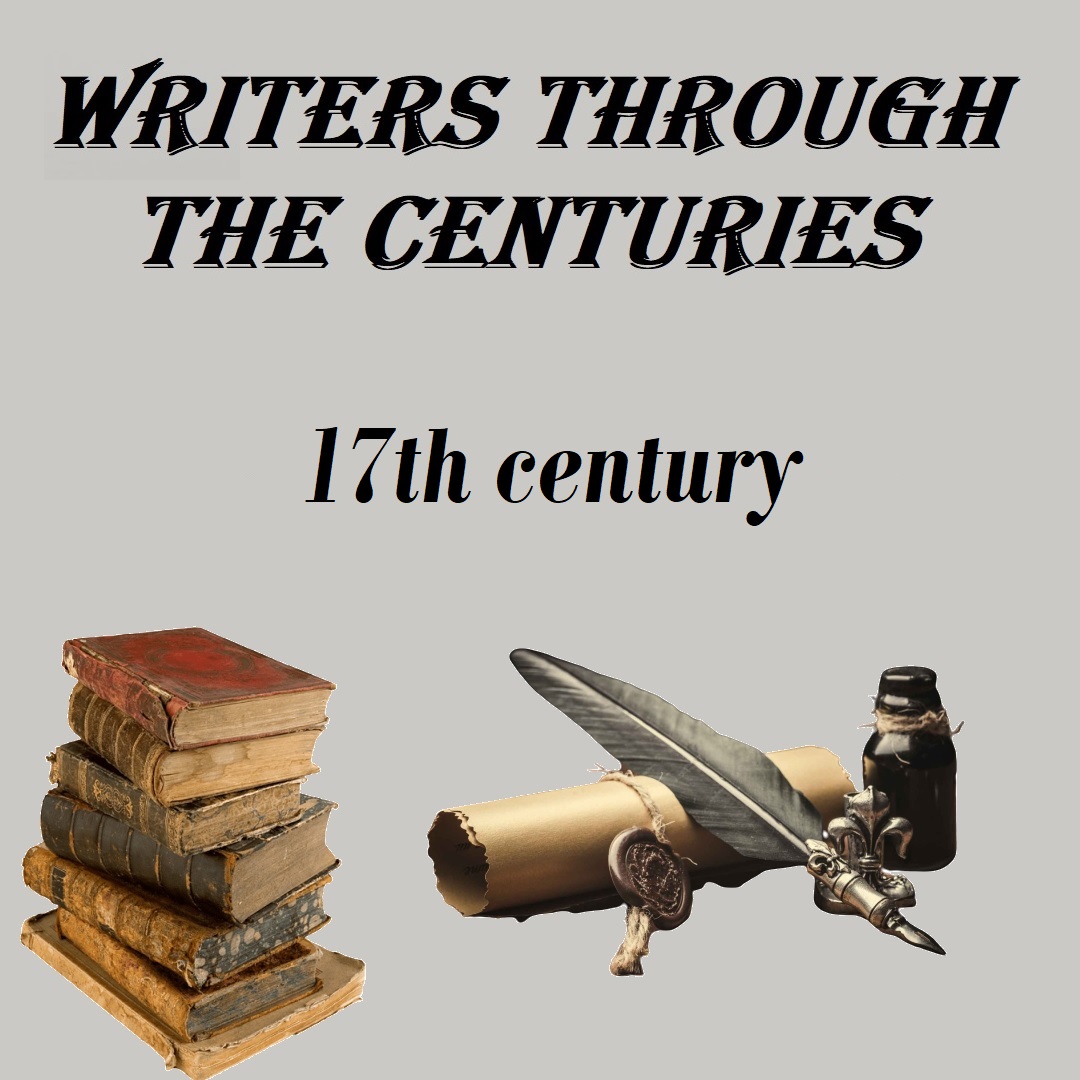Writers through the centuries - 17th Century
episode 3

17th century brings along the baroque movement (1600-1750), which establishes itself onto literature as well. The 17th-century literature sees the introduction on a broader scale: satires, pamphlets, and continues the increasing interest in love as a feeling, expressed in literature and music. Both platonic love and the moral analysis of love is described in the work of this century.
Germany sees one of the most prolific periods of its literature in the Baroque epoch. Writers in Germany relate their stories from their personal experience of the thirty years of war. It is the start of a new literary technique in which subjective experience is mirrored into books. One of the main operas in this category is: “Simplicius Simplicissimus”, written by Schleifheim von Sulsfort.
The baroque architecture is also very different from the one of the renaissance. Baroque brings the atlas in architecture (or atlant, altante) support sculpted in a man’s shape, which gives an artistic end to a column, pier or a pilaster.
Atlas usage is just one example for the desire of the artists to push their limits, making the pictures and sculptures more alive, more realistic, with the usage of optical illusions. The ceiling had small arches and bridges to simulate connectivity between the images depicted, giving a full assembly image. More angels and the altar becomes with a much wider space, depicting heaven’s paintings with an addition of windows above to bring even more light and give a methaporical light bridge between heaven and earth.
In the 17th century, ideology was tremendously influenced by the Catholic Church’s Counter-reform, triggered by the Council of Trent 1545-1563. The Catholic Church wants a change in the architecture so that the folk can relate more to the depicted artistic sculpture and paintings. The church encourages an emphasis on the more “aliveness” of the paintings and sculptures. The baroque movement is popularized and enforced in Spain, mainly by the Jesuits.
There are further steps in another art form; in music, the lute is still primarily used. Still, some other instruments are also starting to get more involved in the artistic, musical experience: the violin, the organ, and eventually the piano and orchestra. Piano and orchestra usage will create a new form of art, alongside some theatrical involvement: the opera.
Music sees two incredible musicians in the persons of Arcangelo Corelli - 12 sonata of opus V - La Follia (1700) and Johan Pachelbel - Canon in D major (1680).
And we see a mixture between the baroque and classic composers: Claudio Monteverdi (1567-1643), Antonio Vivaldi (1678-1741), Johann Sebastian Bach (1685-1750), George Frederic Handel (1685-1759), which fall under the Baroque style of music have their compositions mainly presented in the 18th century (after 1701).
Theatre is still a compelling element. Ballet became more and more popular, and if the dancers were at first the royal court members, a new group of ballet dancers appeared as professional dancers. The Menuet continued to be the main form of court dance. Louis XIV (1638-1715) encouraged the new types of dance, and in 1661 founded the: “Académie Royale de Danse.”
Baroque literature saw some brilliant minds like: John Milton (1608-1674), Charles Perrault (1628-1703), Daniel Defoe (1660 – 1731), Gabrielle-Suzanne de Villeneuve (1685 – 1755), and Jonathan Swift (1667-1745). The period clashes and overlaps as well with the Enlightenment period.
Of course, some of these great authors’ work will fall under the next century eyes (18th century), but the birth year of these titans of universal literature still is in the 17th century.
Nihil sine Deo